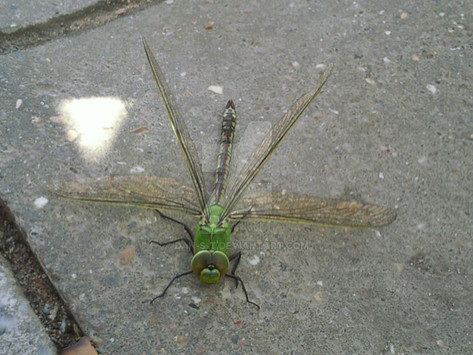HOME | DD
 log1t3ch — LSR Butts II
log1t3ch — LSR Butts II

Published: 2008-04-05 13:16:14 +0000 UTC; Views: 161; Favourites: 2; Downloads: 4
Redirect to original
Description
First discovered in Singapore (Punggol area) in September 2006, the species has since spread to many other parts of Singapore.The butterflies of this subfamily are characterised by a perfectly flat hindwing and by having the cells of both wings closed by tubular veins. Their behaviour is sluggish, and, like the Danainae, they have a leathery body and are tenacious of life. They frequently exhibit Mullerian mimicry and serve as models for Batesian mimics from other families. The subfamily is strongly represented in the Ethiopian region, less so in the Neotropical Region, and is weakly represented in the Oriental and Australial Regions.
The egg resembles that of Danaini being much higher than wide and bearing rather ill-defined vertical ribs. The eggs are laid in clusters and the gregarious larvae are cylindrical and bear branched spines, termed scoli, on each segment. The host plants are commonly species of Passifloraceae.
Description
Wingspan 45-55mm. A medium sized reddish brown butterfly with rounded wing apices and rather long wings. The male is brightly coloured, while the female, even a freshly emerged specimen, is quite dull. The wings of both sexes are somewhat transparent, though it is more so in the female. The upperside is studded with black spots and small markings. The marginal band of the hind wing on the upper sides is black and has small white spots. The corresponding band on the underside is much wider, but is almost entirely occupied by large white spots.
Similar species
The Common Leopard is similar but does not have the rounded wings nor the black submarginal band on the hind wing. Also, it is a very active butterfly that flies fast with rapid wing beats.
Status, distribution and habitat
A common butterfly found throughout the island from sea level to 2000 feet elevation. It is a butterfly of open spaces with lots of sunshine. Edges of forests and cultivated fields, roadsides, property boundaries with over-grown vegetation, coastal sand dunes and secondary forests are its habitats. It may be seen throughout the year but is commonest and most abundant during the monsoons.
Habits
The Tawny Coster is an unpalatable species and does not have much appeal to predators in any stage of its life. Even mantids, which feed on other poisonous species such as Danaids, keep away from this species. It defends itself by exuding an unpleasant oily liquid when captured or handled - a strategy that allows it to search for food and mates slowly and leisurely, with minimal expenditure of energy.
It frequently settles on flowers of herbaceous plants and has the habit of opening and closing its wings as it nectars on flowers. It does not fly high but remains within a few feet of the ground, circling in and out of clumps of vegetation. Interestingly, this species does not have any mimics in the island though they are numerous in Africa.
Early stages
The larvae feed on members of the Cucurbitaceae and Passifloraceae.
Scientific Name: Acraea violae (Tawny Coster)
Description
Family : Nymphalidae
SubFamily : Heliconiinae
Common Name : Tawny Coster, 斑珍蝶
























